Breeding (Sep.-June)

Female
03/26/2012 - San Diego Zoo, San Diego, CA
Female
03/26/2012 - San Diego Zoo, San Diego, CA
|

Male with windblown head feathers
03/12/2013 - Green Key Park, New Port Richey, FL
Male with windblown head feathers
03/12/2013 - Green Key Park, New Port Richey, FL
|

Male Wood Duck with female Mallard (an item)
03/31/2008 - Union City Library, CA
Male Wood Duck with female Mallard (an item)
03/31/2008 - Union City Library, CA
|

Male with a little bit of tongue showing
03/31/2008 - Union City Library, CA
Male with a little bit of tongue showing
03/31/2008 - Union City Library, CA
|

Male
03/31/2008 - Union City Library, CA
Male
03/31/2008 - Union City Library, CA
|

Male, won Hon. Mention at BCC
03/31/2008 - Union City Library, CA
Male, won Hon. Mention at BCC
03/31/2008 - Union City Library, CA
|
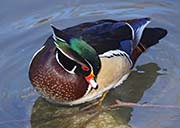
Male
02/09/2009 - Union City Library, CA
Male
02/09/2009 - Union City Library, CA
|
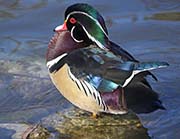
Male
02/09/2009 - Union City Library, CA
Male
02/09/2009 - Union City Library, CA
|

Males
03/05/2009 - Audubon Park, New Orleans, LA
Males
03/05/2009 - Audubon Park, New Orleans, LA
|

Female
03/05/2009 - Audubon Park, New Orleans, LA
Female
03/05/2009 - Audubon Park, New Orleans, LA
|

Male & Female
03/05/2009 - Audubon Park, New Orleans, LA
Male & Female
03/05/2009 - Audubon Park, New Orleans, LA
|

Male
03/05/2009 - Audubon Park, New Orleans, LA
Male
03/05/2009 - Audubon Park, New Orleans, LA
|

Male & Female
10/28/2009 - Rio Grande Zoo, Albuquerque, NM
Male & Female
10/28/2009 - Rio Grande Zoo, Albuquerque, NM
|
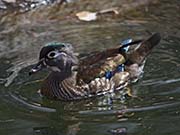
Female
03/26/2010 - Rio Grande Zoo, New Mexico
Female
03/26/2010 - Rio Grande Zoo, New Mexico
|

Female
03/26/2010 - Rio Grande Zoo, New Mexico
Female
03/26/2010 - Rio Grande Zoo, New Mexico
|

Female - note the tongue
03/26/2010 - Rio Grande Zoo, New Mexico
Female - note the tongue
03/26/2010 - Rio Grande Zoo, New Mexico
|
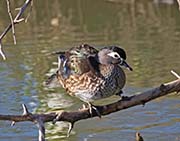
Female
01/27/2012 - Audubon Zoo, New Orleans, LA
Female
01/27/2012 - Audubon Zoo, New Orleans, LA
|

Male and female on a nest box
03/27/2012 - Santee Lakes, San Diego, CA
Male and female on a nest box
03/27/2012 - Santee Lakes, San Diego, CA
|

Males in non-breeding plumage
09/05/2013 - Parc du Mont-Royal, Montreal, Canada
Males in non-breeding plumage
09/05/2013 - Parc du Mont-Royal, Montreal, Canada
|
|
|
Non-breeding (June-Sep)

Male in non-breeding plumage
07/10/2012 - San Diego Zoo's Wild Animal Park, San Diego, CA
Male in non-breeding plumage
07/10/2012 - San Diego Zoo's Wild Animal Park, San Diego, CA
|
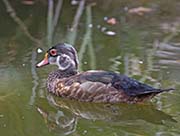
Male in non-breeding plumage
07/10/2012 - San Diego Zoo's Wild Animal Park, San Diego, CA
Male in non-breeding plumage
07/10/2012 - San Diego Zoo's Wild Animal Park, San Diego, CA
|
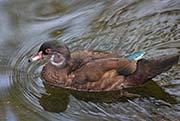
Male in non-breeding plumage
08/25/2012 - National Aviary, Pittsburg, PA
Male in non-breeding plumage
08/25/2012 - National Aviary, Pittsburg, PA
|
Diet:
Wood Ducks are omnivores and eat a variety of aquatic and dry land food.
Examples of food include invertebrates, seeds, fruit,
insects, acorns, nuts, etc.
Courtship:
It is believed that Wood Ducks are monogamous for a single breeding season
and that pair bonds frequently don't last more than one season.
Courtship usually begins 6-7 months before the nesting season.
Actual courtship rituals include ritualized displays and
vocalizations by the male.
They have 21 ritualized courtship displays some lasting only a second.
The courtship displays are either done singly or done one after another.
Nesting:
Wood Duck build their nest in natural or woodpecker excavated tree cavities
near swamps, marshes, streams, small lakes, etc.
They prefer fresh water.
They will also use nest boxes.
Wood Ducks will re-nest if their first (and maybe second) clutch is destroyed.
In some areas they may also have more than one successful clutch.
Wood Ducks are the only North American duck that produced
two broods in one year.
Clutch size is difficult to gauge because female Wood Ducks
will lay eggs in other
nests, but clutch size usually varies from 8-15.
The young are "precocial" and jump out of the nest the day
after they are hatched and head for the water.
Ducklings feed on vegetation and terrestrial invertebrates during the first few weeks of life.
Habitat and Range:
Wood Ducks inhabit a wide variety of habitats that are new freshwater.
They prefer water that has vegetation that they can hid in.
They tend to avoid salt and brackish marshes and large expansive open waters.
They are found throughout most of the U.S., Mexico, and the southern parts of Canada.
Vocalization:
Male and female Wood Ducks create different sounds.
The male can create whistle-like sounds and the female have a louder
and harsher voice.
Plumage/Molt:
The male Wood Duck is the first North American duck to enter basic plumage
and the first to enter alternate (breeding) plumage.
Migration:
Migration is dependent on where Wood Ducks live.
Breeding ducks in the northern part of North America
migrate south in winter to either
the southwestern states or Mexico.
Otherwise, Wood Ducks are year-round residents.
Wood ducks that reside in the southern areas of the U.S. do not migrate.
Wood Ducks, like many birds, mainly migrate at night.
Tongue/feet:
Wood Duck claws are very strong and they can grip bark and perch on branches.
This is not true of most ducks.
Bibliography:
- http://en.wikipedia.org The Free Encyclopedia, Accessed June, 2012
- Bellrose, Frank C. & Daniel J. Holm, Ecology and Management of the Wood Duck,Stackpole Books, Mechanicsburg, Pennsylvania 1994
Top of Page





















